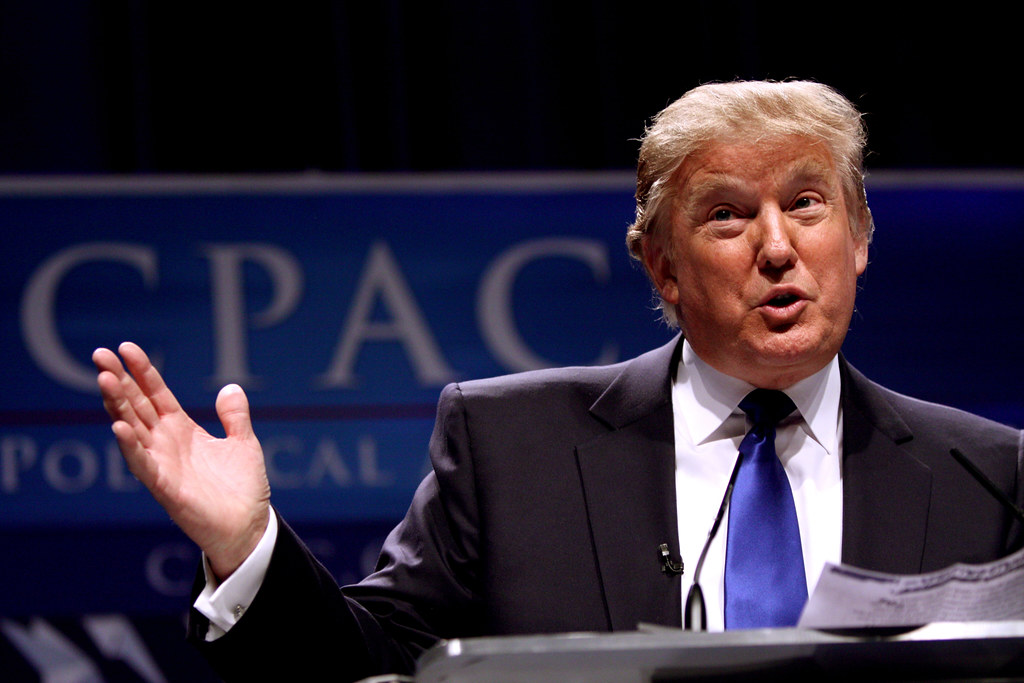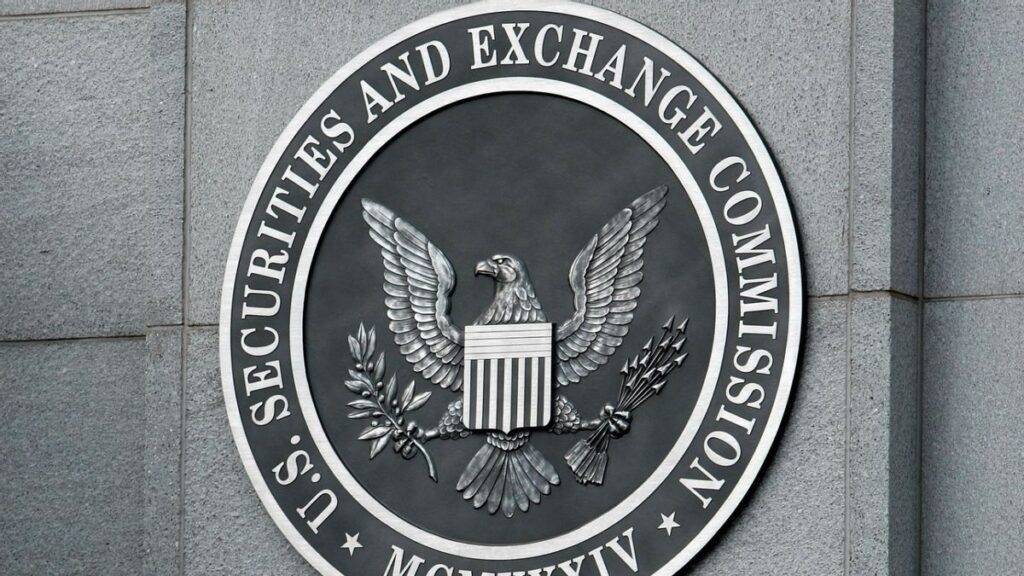Main Points:
- Retroactive Relief for Past Token Offerings: The SEC is considering offering retroactive relief for certain crypto token offerings under specified conditions.
- Reevaluation of Crypto’s Securities Status: A dedicated task force is reexamining whether various digital assets should be classified as securities.
- Political and Executive Influence: Recent moves by the White House and previous Trump administration initiatives are driving a more defined regulatory framework.
- Impacts on Industry Participants: Enhanced regulatory clarity may spur greater institutional participation and broader industry innovation.
- Traditional Finance’s Interest in Crypto: Clearer guidelines could lead traditional banks and financial institutions to actively participate in crypto settlements and transactions.
1. Retroactive Relief for Past Token Offerings
In a significant policy shift, the U.S. Securities and Exchange Commission (SEC) is evaluating the possibility of providing retroactive relief for past crypto token offerings. This consideration comes amid ongoing debates about the classification of digital assets and the legal ambiguities surrounding them. SEC Commissioner Hester Peirce outlined in a statement released on February 4 that under certain conditions, token issuers might receive both forward-looking and retroactive relief for earlier offerings that may have been conducted without full regulatory compliance.
The conditions under which this relief could be provided are strict. Issuers would be required to provide detailed information and update disclosures regularly. Additionally, should any lawsuits alleging fraud related to the sale of these assets be initiated, these issuers must agree not to challenge the SEC’s jurisdiction over such cases. This approach, sometimes referred to as “retroactive relief,” is designed to balance the need for investor protection with the desire to encourage innovation and market development within the crypto space.
By offering retroactive relief, the SEC appears to be acknowledging that many early token offerings occurred in an environment of regulatory uncertainty. Many projects, launched during the formative years of the digital asset ecosystem, were conducted without the benefit of clear regulatory guidance. This initiative could potentially smooth the path for these legacy projects to operate within a more defined legal framework, thus fostering greater confidence among investors and industry participants.
2. Reevaluation of Crypto’s Securities Status
A central element of the SEC’s evolving stance on digital assets is the comprehensive reassessment of whether various cryptocurrencies and tokens should be classified as securities under U.S. law. Commissioner Peirce emphasized that determining the proper status of these assets is fundamental to resolving many of the legal and practical challenges facing the industry.
A newly established White House task force, which has emerged as a key driver in this process, is actively examining a range of digital assets. This task force’s mandate includes developing clearer definitions and regulatory parameters for what constitutes a security in the crypto space. In doing so, the task force is not only looking forward but also advising on measures that could potentially offer retroactive remedies for earlier offerings that did not meet the current regulatory standards.
The reclassification efforts are important because they can influence everything from market practices to investor protections. Should certain tokens be deemed securities, they would fall under a regulatory regime that mandates extensive disclosures, investor safeguards, and other requirements typical of traditional securities. On the other hand, if tokens are given a different classification, it might open up more flexible paths for innovation while still providing necessary investor protections.
This reexamination reflects broader trends in the industry. Many experts believe that a clear regulatory framework could encourage more robust participation by institutional investors who have, until now, been cautious due to the ambiguous legal landscape. Clear definitions would also help developers and project founders understand the rules of the game, potentially leading to more innovative and compliant digital asset projects.
3. Political and Executive Influence on Crypto Regulation
Political leadership and executive actions have played a significant role in shaping the regulatory landscape for cryptocurrencies in the United States. The establishment of a digital asset task force by the White House marks a critical step toward regulatory clarity. This initiative follows a series of actions that began during the Trump administration, which notably appointed crypto-friendly figures to key regulatory positions.
For instance, former SEC Chair Gary Gensler was criticized for a lack of regulatory clarity under his predecessor’s administration. In contrast, subsequent actions have indicated a strong commitment to resolving these ambiguities. Under the previous administration, President Donald Trump appointed Paul Atkins—a known supporter of crypto innovation—as a special advisor on crypto and artificial intelligence. Moreover, Trump issued executive orders that led to the creation of a dedicated working group focused on digital assets. These early efforts have set the stage for the more systematic approach being pursued today.
Congress is also increasingly engaged in this process. Representative Tom Emmer, a prominent Republican voice, has advocated for comprehensive market structure reform and specific legislation targeting stablecoins. Emmer’s push for a legislative framework underscores the bipartisan recognition that clearer rules are needed not only for investor protection but also for fostering a competitive and innovative market environment.
This evolving political climate is critical because regulatory certainty is a major factor in the adoption of new technologies. When lawmakers and regulators signal that they are committed to creating a predictable legal environment, it encourages investment and innovation. The renewed focus on crypto regulation by both the executive branch and legislative leaders signals to the market that the era of regulatory ambiguity may be coming to an end.

4. Impacts on Industry Participants
The potential for retroactive relief and clearer regulatory definitions is expected to have wide-reaching implications for various industry participants, from early crypto projects to established companies in the financial services sector.
For startups and smaller projects, retroactive relief could represent a lifeline. Many digital asset projects that launched during periods of regulatory uncertainty have been hesitant to evolve or expand due to fears of legal repercussions. By offering a pathway to compliance, the SEC’s proposal may help these projects continue operating and innovating without the constant threat of legal action. The assurance of regulatory clarity can also boost investor confidence, thereby facilitating additional capital inflows into the crypto ecosystem.
For more established companies, such as exchanges and financial technology firms, the prospect of clearer rules means less uncertainty. Companies like Coinbase, whose CEO Brian Armstrong has publicly commented on the potential benefits of a rational stablecoin framework, see this as an opportunity to attract traditional finance participants into the crypto space. When banks and other large financial institutions have clear guidelines to follow, they are more likely to engage in activities such as digital asset settlement and custody, thereby bridging the gap between traditional finance and the emerging crypto markets.
Moreover, traditional financial institutions are already showing increased interest in crypto settlements. For example, Bank of America CEO Brian Moynihan has noted that if crypto trading becomes more mainstream, banks will naturally move to participate more actively in the payment and settlement aspects of these transactions. This symbiosis between legacy financial institutions and crypto innovators could lead to a more integrated financial ecosystem, where digital and traditional finance complement one another.
5. Emerging Trends and Broader Implications
The SEC’s initiatives and the accompanying regulatory shifts are part of a broader trend toward global regulatory clarity in the crypto space. Similar efforts are being observed in other jurisdictions around the world. In Europe, for example, the Markets in Crypto-Assets (MiCA) regulation is setting out comprehensive rules that aim to integrate digital assets into the existing financial framework. Asian markets are also evolving, with countries like Singapore and Japan taking active steps to develop clear and forward-thinking regulatory environments for digital assets.
This global push for clarity is driven by the recognition that digital assets are not a fleeting trend but an integral part of the future financial landscape. With increasing adoption, it has become clear that without a structured regulatory framework, the risk of fraud, market manipulation, and other illegal activities remains high. Conversely, too restrictive an environment could stifle innovation. The challenge for regulators, including the SEC, is to strike a balance that ensures investor protection while still fostering innovation.
The potential retroactive relief for past token offerings is one example of this balancing act. On one hand, it acknowledges that many early projects operated without the benefit of clear guidance; on the other, it sets forth conditions that ensure these projects adhere to rigorous standards going forward. This dual approach is likely to influence how other jurisdictions address similar challenges, potentially leading to a more harmonized global regulatory framework over time.
Another emerging trend is the increasing interest in stablecoins. Stablecoins—digital assets pegged to traditional currencies—have garnered significant attention due to their potential to offer the benefits of cryptocurrencies without the notorious price volatility. Both political figures and industry leaders have underscored the importance of stablecoin regulation. With bipartisan support in Congress and strong interest from the White House, stablecoins could be at the forefront of regulatory innovation, potentially serving as a model for how other digital assets might be regulated in the future.
Furthermore, the reassessment of crypto’s status as securities carries broader implications for the entire digital asset ecosystem. If a clear and definitive framework is established, it could pave the way for more standardized practices across the industry. This would benefit investors, developers, and companies alike by reducing uncertainty and encouraging best practices in areas such as disclosure, auditing, and compliance.
6. A Comprehensive Look at the Future of Crypto Regulation
The current initiatives by the SEC and the White House signal a transformative moment in the regulation of digital assets in the United States. The prospect of retroactive relief for past token offerings, coupled with a reexamination of crypto’s securities status, represents a thoughtful effort to reconcile the rapid pace of innovation in the crypto space with the need for regulatory oversight.
For innovators, investors, and institutional players, these developments offer a clearer roadmap for navigating the legal and operational challenges of the crypto market. With regulatory clarity, early-stage projects that may have previously operated in a legal gray area will have the opportunity to align themselves with established standards, potentially unlocking new investment opportunities and partnerships. In parallel, larger financial institutions, traditionally cautious about entering a nascent market, may find renewed confidence in investing in and utilizing digital assets as part of their core business strategies.
The evolving regulatory landscape is not merely a domestic issue; it has significant implications for the global digital asset market as well. As regulators in other countries follow suit by developing their own frameworks, the international community may soon witness a more harmonized approach to crypto regulation. Such a scenario could facilitate cross-border investments, enhance market liquidity, and pave the way for more robust global financial integration.
In conclusion, the SEC’s contemplation of retroactive relief for past crypto token offerings, along with the broader regulatory reforms being driven by both executive action and legislative initiatives, is a clear indication that the crypto industry is maturing. The steps being taken today are likely to have a long-lasting impact, fostering a more secure, transparent, and innovative environment for all participants in the digital asset ecosystem.
Future outlook
To sum up, the U.S. SEC’s current initiatives mark a pivotal moment in the regulation of digital assets. By potentially offering retroactive relief to past token offerings and reevaluating the status of cryptocurrencies as securities, regulators are striving to create a balanced framework that addresses both investor protection and innovation. The influence of political leadership, exemplified by recent White House initiatives and previous actions during the Trump administration, underscores a strong commitment to regulatory clarity. This clarity is not only critical for startups and early crypto projects but also for traditional financial institutions that are increasingly interested in digital asset settlements and transactions. As global regulators follow suit with similar measures, the stage is set for a harmonized and robust framework that could well define the future of the crypto industry worldwide.


